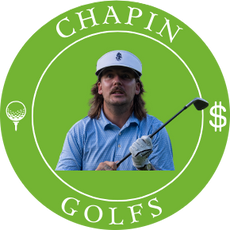
How the Pros Train in the Off-Season — Full Breakdown

By Chapin William
When the PGA and LPGA seasons wind down, the cameras stop rolling — but the real work begins.
While most golfers hang up their clubs for the winter, professionals use the off-season as their laboratory: a chance to rebuild, refine, and reset every part of their game.
If you’ve ever wondered what the world’s best do when no one’s watching — here’s the full breakdown of how the pros train smarter, not just harder.
1. The Reset Phase — Healing Before Hustle
Before any swing work or gym grind begins, pros focus on recovery.
Months of tournament stress create micro-injuries, fatigue, and technical habits that need to unwind. The first few weeks of the off-season are all about:
-
Active recovery: light mobility, physio, massage therapy
-
Sleep optimization: resetting circadian rhythm for deeper rest
-
Mental detox: unplugging from competition mode and reflection on goals
“The biggest mistake amateurs make? They never rest before rebuilding,” says one tour fitness coach.
“Pros know that recovery creates capacity.”
Member Tip:
Take one week off completely — no swing, no gym.
Then ease back in with movement, not mechanics.
2. Strength & Stability — Building the Golf Athlete
Once recovery is complete, the gym becomes the priority.
Golfers today aren’t just swinging clubs — they’re training like hybrid athletes.
The focus? Power, mobility, and balance.
🔹 Key Strength Patterns:
-
Rotational power (medicine ball throws, cable rotations)
-
Posterior chain work (deadlifts, glute bridges, kettlebell swings)
-
Core stability (anti-rotation holds, planks, Pallof presses)
-
Shoulder integrity (band work, external rotations, Y-T-Ws)
Sessions are structured around movement efficiency, not bodybuilding.
The goal: generate more speed with less strain.
Pro Insight:
-
3–4 gym sessions per week
-
Emphasis on explosive training, not endurance
-
Measured progress with launch monitors and motion sensors
3. Swing Rebuild & Technical Tune-Ups
With the body ready, it’s time to fix what couldn’t be touched mid-season.
During tournaments, pros avoid big mechanical changes. But off-season? That’s when they tear down and rebuild.
Focus areas include:
-
Grip and posture recalibration
-
Sequence drills for better transition
-
Shot-shaping control (fade/draw precision)
-
Tempo refinement
They work closely with coaches, using 3D motion capture, TrackMan, and slow-motion video to analyze every frame of their movement.
Member Practice Plan:
✅ Dedicate one range session per week solely to tempo and transition.
Forget distance. Train feel and sequence.
4. The Mental Recalibration
Tournament golf drains emotional energy — not just physical stamina.
That’s why the off-season includes mental conditioning as a key pillar.
Pros practice mindfulness, journaling, and visualization to strengthen mental patterns before the next season starts.
Their toolkit often includes:
-
Guided visualization of upcoming tournaments
-
Reviewing emotional triggers from past rounds
-
Working with sports psychologists to build resilience routines
Reset Exercise:
After each practice, write down one thing you controlled well and one thing you’ll let go of.
This builds mental discipline that carries into pressure situations.
5. The Practice Blueprint
By mid-off-season, training becomes highly structured — blending physical, technical, and mental work into a single rhythm.
Here’s a typical pro-level weekly structure:
| Day | Focus Area | Notes |
|---|---|---|
| Monday | Strength + Short Game | Heavy lifts, chipping drills |
| Tuesday | Full Swing Mechanics | 3-hour range work, tempo focus |
| Wednesday | Mobility + Putting | Yoga + distance control practice |
| Thursday | On-Course Simulation | 9-hole scoring challenge |
| Friday | Gym + Wedge Work | Explosiveness + distance mapping |
| Saturday | Recovery | Sauna, stretch, mental reset |
| Sunday | Rest / Light Walk | Full rest day |
6. Nutrition & Energy Management
Off-season nutrition shifts from quick tournament meals to long-term fueling.
Pro Priorities:
-
Protein-rich meals for muscle repair
-
Hydration tracking for recovery
-
Anti-inflammatory foods (berries, fish oils, greens)
-
Reduced caffeine and sugar for better sleep cycles
Some players even use metabolic testing to optimize training around energy output — adjusting meals by body data, not guesswork.
7. Transition Back to Competition
As the new season nears, intensity ramps up.
Pros reintroduce competitive simulation, playing full rounds with score pressure, specific goals, and timed routines.
Final 3 Weeks Focus:
-
On-course decision drills
-
Tournament visualization
-
Travel and time-zone conditioning
-
Equipment testing (new shafts, grips, and lofts)
By the time the first tee shot of the year comes around, every system — physical, technical, and mental — is synced.







